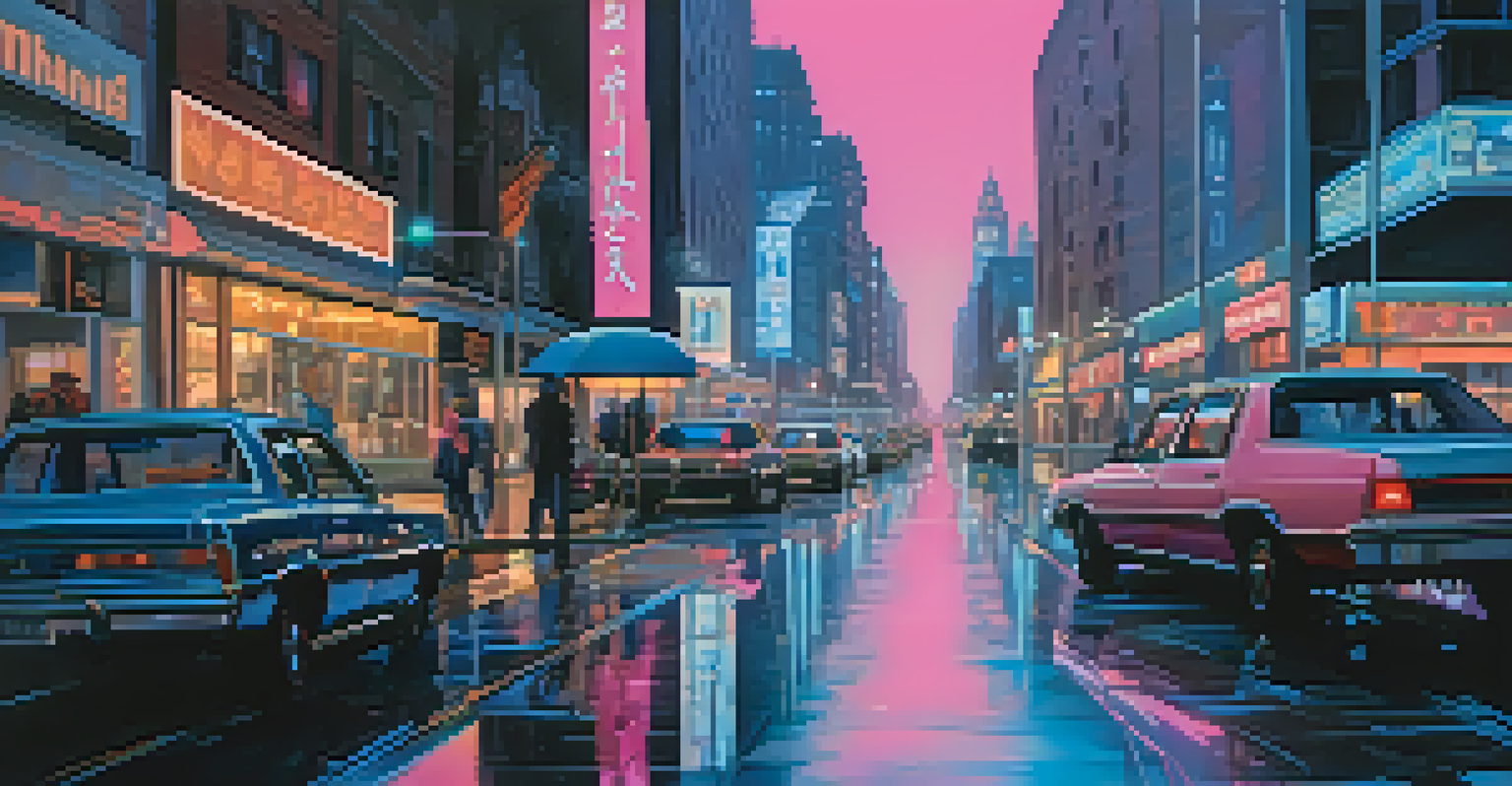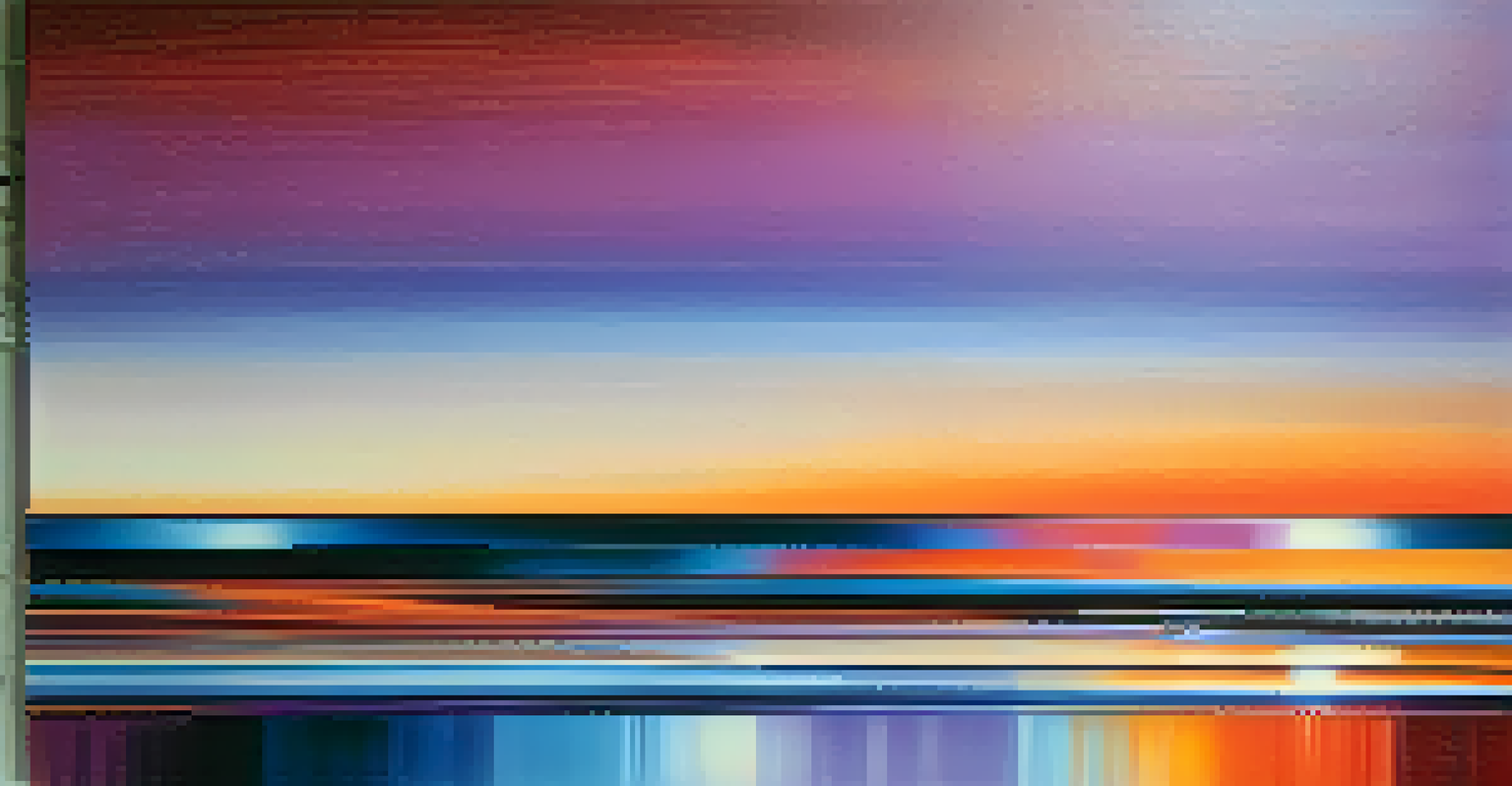The Power of Color in Cinematography: Emotions Unleashed

Understanding Color Theory in Film
Color theory is the foundation of how colors interact and evoke emotions. In cinematography, understanding this theory helps filmmakers choose the right palette to tell their story. For example, warm colors like red and orange can create feelings of passion or urgency, while cool colors like blue and green often evoke calmness or sadness.
Color is the keyboard, the eyes are the harmonies, the soul is the piano with many strings.
Filmmakers often rely on color wheels to select complementary or contrasting colors to enhance the narrative. This can lead to powerful visual storytelling, as the audience subconsciously responds to these colors. Think of a scene drenched in deep reds during a moment of conflict—it’s not just visually striking, it’s emotionally charged.
In essence, color theory serves as a tool that guides directors and cinematographers in crafting the emotional undertones of their films. By understanding how colors affect perception, they can create a more immersive experience for viewers.
The Emotional Impact of Color Choices
Every color carries psychological weight, and filmmakers use this to their advantage. For instance, a bright yellow can symbolize optimism and joy, while dark colors like black can represent despair or danger. This emotional resonance is crucial in shaping how we interpret scenes and characters.

Consider the classic film 'The Sixth Sense,' where the color red is used sparingly but effectively. It signifies moments of danger and the supernatural, drawing viewers' attention and heightening tension. Such strategic color choices can transform a simple scene into a rich emotional landscape.
Color Theory Enhances Storytelling
Understanding color theory allows filmmakers to evoke emotions and enhance narratives through strategic color choices.
Ultimately, the emotional impact of color choices in film is profound. It helps convey complex feelings without the need for dialogue, allowing audiences to connect with the characters on a deeper level.
Cultural Context and Color Meaning
Colors can have different meanings across various cultures, making context essential in cinematography. For example, while white often symbolizes purity in Western cultures, it can represent mourning in some Eastern traditions. Filmmakers need to be mindful of these cultural interpretations when crafting their visual stories.
Colors are the smiles of nature.
This cultural nuance can add layers to a film’s narrative. In 'The Last Samurai,' the use of red represents honor and courage within the Japanese culture, creating a stark contrast to the more subdued tones of the Western characters. Such choices enrich the storytelling and deepen audience engagement.
By acknowledging cultural contexts, filmmakers can create more relatable and powerful narratives. This enhances the emotional experience, making the film resonate with a wider audience.
Color Gradients and Their Symbolism
Color gradients, or transitions from one color to another, can symbolize change and evolution within a film. For example, a gradual shift from a bright, vibrant color to a muted tone can signify a character’s decline or loss. This visual storytelling technique subtly guides viewers through the emotional journey.
In the movie 'La La Land,' the use of color gradients during musical sequences beautifully reflects the characters' dreams and aspirations. As the colors shift, so do the emotions, highlighting the highs and lows of their journey. Such visual cues can enhance the narrative and deepen the audience's emotional investment.
Cultural Context Shapes Color Meaning
Colors can have varied meanings across cultures, which filmmakers must consider to create relatable and powerful narratives.
By employing color gradients thoughtfully, filmmakers can create a dynamic visual experience that resonates with viewers. This technique adds a layer of depth to storytelling, making it more impactful.
Lighting and Color Interplay
The interplay between lighting and color is a crucial aspect of cinematography. Different lighting techniques can drastically alter how a color is perceived. For instance, soft lighting can make colors appear more gentle and inviting, while harsh lighting can create stark contrasts that evoke tension and drama.
In films like 'Blade Runner 2049,' the interplay of neon colors and shadow creates a futuristic yet gritty atmosphere. The lighting enhances the emotional tone, making the audience feel the weight of the characters’ struggles. This dynamic relationship between lighting and color amplifies the overall emotional impact of the film.
Understanding how lighting affects color perception is essential for filmmakers. By mastering this interplay, they can craft more compelling and emotionally rich visuals.
Color as a Narrative Device
Color can serve as a narrative device, guiding the audience's understanding of the story. Filmmakers often assign specific colors to characters or themes, helping to convey their journeys. For instance, a character clad in green may symbolize growth or jealousy, depending on the context of the story.
In 'The Wizard of Oz,' the transition from sepia tones in Kansas to vibrant colors in Oz symbolizes the shift from monotony to adventure. This dramatic use of color not only enhances the visual appeal but also enriches the narrative, making the viewer feel the character's transformation.
Future Innovations in Color Use
Advancements in technology, including VR and AR, are expanding the possibilities for color in cinematography, enhancing emotional storytelling.
Using color as a narrative device allows filmmakers to communicate themes and emotions more effectively. This technique can resonate with audiences long after the credits roll.
The Future of Color in Cinematography
As technology advances, the possibilities for using color in cinematography are expanding. Innovations in digital filmmaking allow for more precise color grading and manipulation, enabling filmmakers to create stunning visual experiences. This opens up new avenues for storytelling and emotional expression.
Virtual reality (VR) and augmented reality (AR) also present exciting opportunities for color use in film. As viewers become more immersed in these environments, the emotional impact of color can be heightened, making the experience even more profound. This evolution gives filmmakers greater creative freedom.

The future of color in cinematography looks bright, with endless possibilities for innovation. As filmmakers continue to explore and experiment with color, audiences can expect to see even more emotionally resonant storytelling in the years to come.